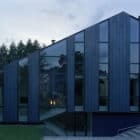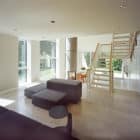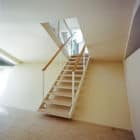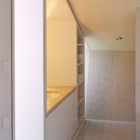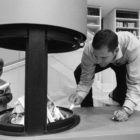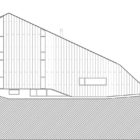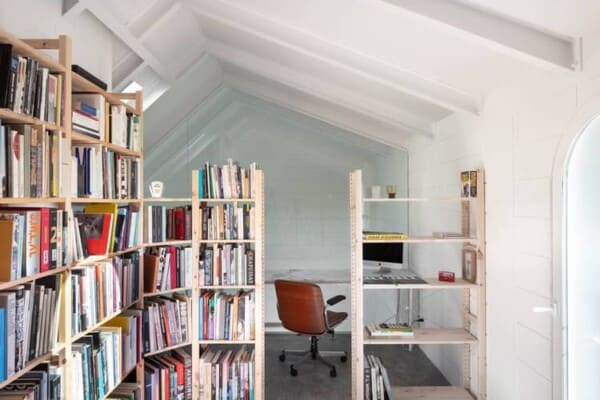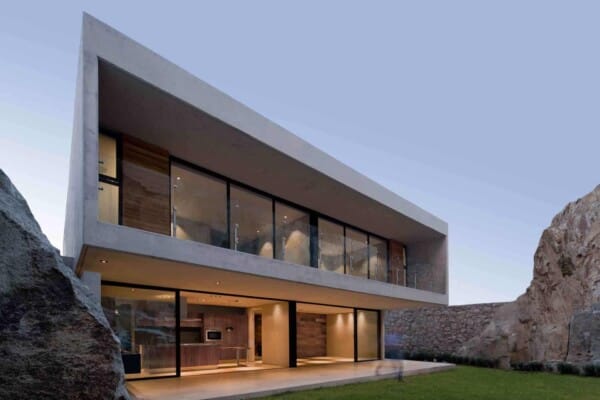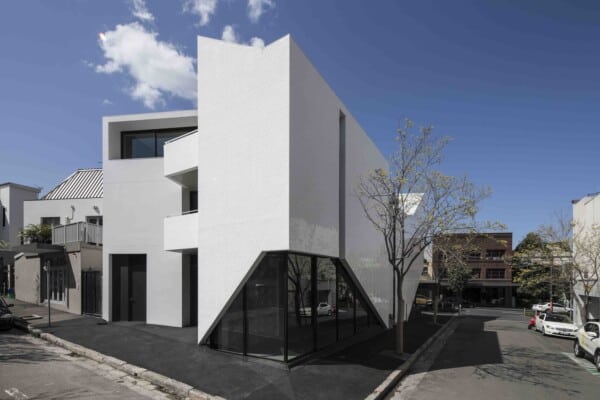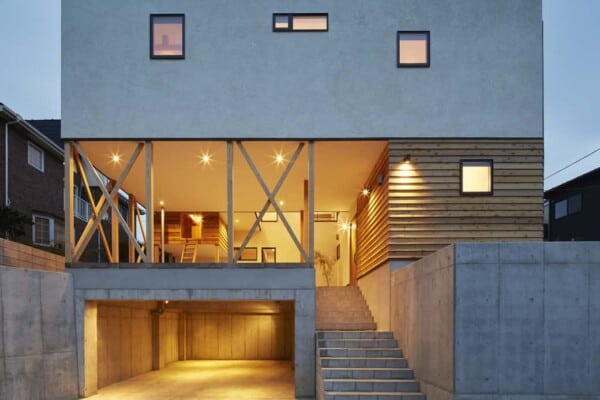Berlin-based studio Pott Architects has designed the Haus W project.
Completed in 2006, this 3,000 square foot contemporary home is located in Berlin, Germany.
Haus W by Pott Architects:
“The individual home of character as the place to enjoy private family life seems to have been increasingly sidelined in these times of standard-pattern pre-assembled housing units, perhaps no longer keeping up with the need for mobility and flexibility. It therefore pleased us very much when a young family of four had the wish and the confidence to work with us to design a custom-built home meeting their needs. The objective was a flexible design that could evolve as family circumstances evolved, and would allow harmony between individual needs for time alone and family needs for time together. The house they had in mind would function like a living thing and would have a place for all the bits and pieces that make up everyday life. It would be a friendly house, with special places for feeling at peace and secure. Over a period of dialogue together, and using a series of variations, models and simulations, we reviewed in depth just what it was felt a family home should offer, and an overall concept was developed.
The building, completed in April 2005, is the result of this intensive process and reflects a very real need for new, characterful home living environments. The house in question is located in the Lichterfelde district of Berlin, in the former garden of a villa built during the prosperous Gründerzeit years of the late 19th century. The actual property is accessed via its own laneway, leading past the villa in front. As it stands transverse to the access lane, approaching visitors can look through a large window straight into the central part of the house. The glowing fire in the fireplace here is in keeping with the historic and elegant appearance of the house itself. The paved forecourt leads to the entrance area, which is designed to meet the topography of the grounds. The entrance to the house is at a sunken ground level, where there is a spacious foyer with a cloakroom and service areas. The single flight of stairs leads directly to the house’s main communal space, including kitchen and dining area. Beyond the fireplace and the freestanding stair to the next floor, and on a split level, are the living-room and the parents’ private rooms. The upper storey has the children’s bedrooms, the gallery in front of them being intended as a shared play area.
Structurally the house is a single volume, zoned off through wall and ceiling elements. The arrangement of the rooms along two parallel access corridors running from the study in the east to the patio creates an enfilade effect which can, where required, be extended or shortened by sliding doors. At the same time, the house’s longitudinal height change marks a zoning-off of private and communal space, offering the alternatives of seclusion or participation. The fireplace is at the centre of this series of rooms and can be seen from all sides. A soothing and cheering central focus. Cupboards and shelving space have been positioned along the whole length of both storeys, on north and south sides of the house, to provide the entire storage and servicing space needed for the adjoining rooms. This feature minimised the need for free-standing furniture and helped create living-space. All internal walls can be moved to meet new accommodation requirements as they arise. The organisational principles involved here were a priority in planning and the outcome contributes greatly to the restful appearance and great flexibility of the interior design.
The interest generated by the external shape of the building derives from the central, hall-like interior space, in turn resulting from the remarkable horizontal displacement of the upper storey and thus also of the opening up of the interior space.
This privileged location in natural surroundings prompted the decision to use a sustainable material with its own natural patina for the shell of the building. The desired homogeneity of appearance made it necessary to choose a material that could function equally well as roofing and as façade cladding. The elegant dark, variable patina of copper is now spreading over the whole body of the house, and in the course of time will blend with the natural colours of the garden. It contrasts strikingly with the precision with which the copper and glass elements are fitted together, and with the distinctive overall shape. The house does without complex air conditioning technology and makes systematic passive use of solar energy. The positioning and dimensioning of the windows is adapted to the path of the sun and provides simple through ventilation and lighting of all rooms, as well as carefully created sight-lines from inside to outside and vice versa.
With the precise planning of the basic concept, Haus W. has been customized to the needs of its occupants, down to the smallest detail, but at the same time it illustrates the wealth of potential for new and different types of homes. We are happy that the family enjoys life in this house and that they talk about a “house that’s like a holiday”.”

Photos by: Rudi Meisel























